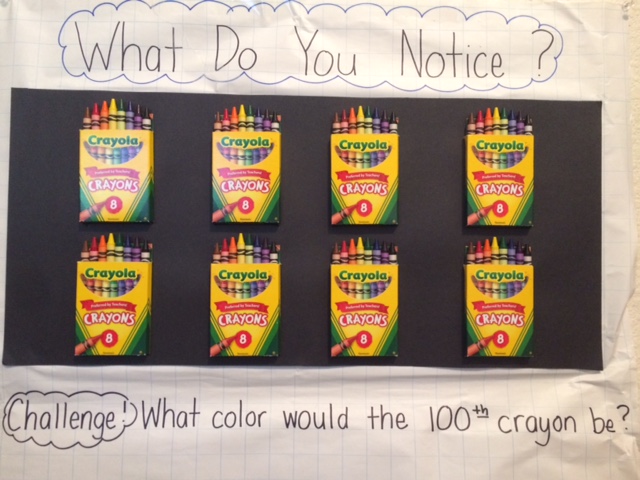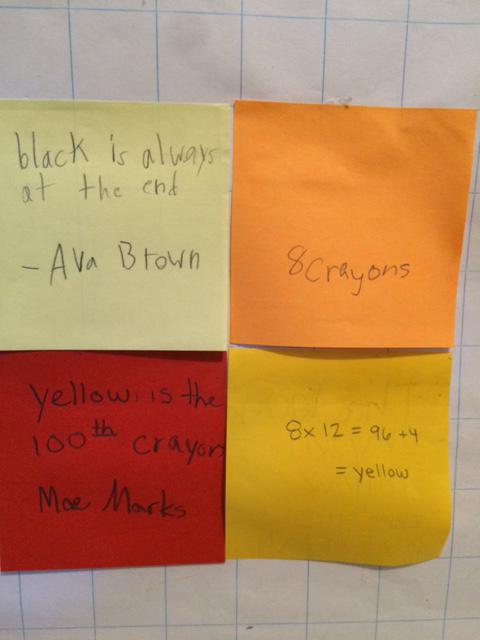
Primary students (K-2): repeating patterns, counting
Intermediate students (3-5): patterns, multiplication, division, skip counting, functions
There are 8 boxes of crayons displayed. Each box holds 8 crayons in the same color pattern: brown, red, orange, yellow, green, blue, purple, black. Young students can simply notice the color patterns and count crayons. Upper elementary students can multiply the number of boxes by 8 to get the total number of crayons. To figure out the color of the 100th crayon, students need to multiply 8 (8 crayons/box) by a number that will get them close to 100, then add on to get to 100. Ex: 8 x 12 = 96. We know the 96th color is black because that is the last color in the box. Then they simply count up…97 (brown), 98 (red), 99 (orange), 100 (yellow).
At a higher level, students can determine the specific numerical placement of any color crayon by creating a function. For example, if they want to know where green shows up, creating a table and then looking for a pattern will help them determine the functional equation: 8X + 5 = numerical placement
| X | Y | Description |
|---|---|---|
| 0 | 5 | (8 x 0 + 5) This represents the first green crayon in the box so the pattern begins at ‘0’. |
| 1 | 13 | (8 x 1 + 5) |
| 2 | 21 | (8 x 2 + 5) |
| X | Y | Description |
|---|---|---|
| 1 | 5 | (8 x 1 - 3) |
| 2 | 13 | (8 x 2 - 3) |
| 3 | 21 | (8 x 3 - 3) |

"Black is always at the end."
"8 crayons."
"Yellow is the 100th crayon."
"8 x 12 = 96 + 4 = yellow."